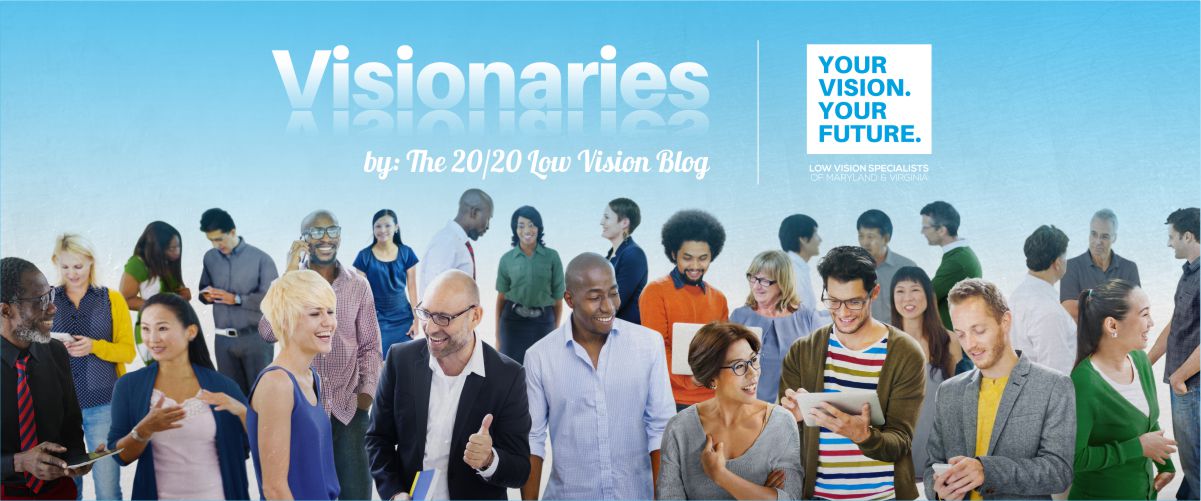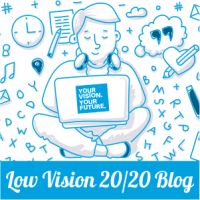Learn how Panasonic is prioritizing accessibility when designing consumer products for individuals who are low vision/blind.

Low Vision Specialists of Maryland & Virginia 20/20 Blog interviews Mr. Tony Jasionowski, Senior Group Manager, Aging & Accessibility, Panasonic Corporation of North America.
Low vision brings with it many challenges and chief among them is the ability to handle the routine tasks of daily living like talking on the phone, doing laundry, and using the television remote. Small screens and indecipherable numbers can make these seemingly mundane tasks extraordinarily difficult. However, a growing number of companies are paying attention to the needs of those with low vision and blindness and designing products that address visual impairment.
One of the leaders in the space is Panasonic whose R & D ten year vision is captured in the slogan, “Creating A Better Life, A Better World, with Technology”. The company continues the deep commitment of its early founder, Konosuke Matsushita, who said “Develop people before making products”. His vision was to design products for all people, including those with disabilities and that philosophy remains the driving force behind Panasonic’s product development today.
To find out what the company is doing to align products with the needs of low vision and legally blind users, Low Vision Specialists of Maryland & Virginia interviewed Tony Jasionowski, Senior Group Manager, Aging & Accessibility, Panasonic Corporation of North America.
“Panasonic has an established policy of following Universal Design, Inclusive Design and Design for All,” said Mr. Jasionowski. “These policies guide our work as we design products that can be used by all people. We have written accessibility policies and guidelines that our designers must follow. I like to call myself an “accessibility evangelist” because I make sure that the products we design address the accessibility needs of the hearing and vision impaired.”
For example, Panasonic has been making telephones for forty years. Over time they have built many accessibility adaptations into the design. The company was the first to put a Secondary Audio Programming (SAP) in red on all their TV remotes as well as nine small bumps, called “nibs” to orient the user. Panasonic was also one of the first to put a close captioned button on a TV remote control.
Mr. Jasionowski provided the data and information necessary to convince the company to introduce the first accessible HDTV. That won the company the Access Award 2013 from the American Foundation of the Blind. Panasonic has been making these accessibility design modifications for decades because as Mr. Jasionowski says “It’s the right thing to do”.
How does Panasonic know what the low vision and legally blind community wants in their communication devices?
Mr. Jasionowski keeps his ear to the ground. He is in close contact with the leading boards and associations serving those communities including the AFB and the Hearing Loss Association of America. He worked with the AFB board for three years to develop the right small visual displays for phones. No detail was overlooked. Should the displays be in green, yellow or full color? What contrast ratio should be used? What colors create the best contrast? What size font is the most easily read?
Never one to tire in pursuit of the best product design to meet the needs of vision and hearing-impaired customers, Mr. Jasionowski researched different phone designs for two years. He worked with the AFB optics lab, provided design samples to the telecommunications distribution program in California, Florida and Texas, displayed the phones at annual conferences, focus groups, meetings, and accessibility conventions. Then he returned to Panasonic with the input to guide the design of the latest phones. As a result, Panasonic phones at all price points offer the following features:
• Talking features in English and Spanish
• Talking caller ID
• Larger keys in black and white for optimal contrast.
• Talking Keypad with back lighting.
• Numbers and letters on each key are as large as possible.
• Phones include audio phone books with storage for commonly used numbers.
• Phone book will read out a name to the user.
• Four bright LED lights on the base unit and three bright LED lights on the handset allow the user to see the phone ringing if the handset is off the base.
• The audio feature or the ringer can be easily turned off during sleeping hours.
What’s next for Panasonic and its products for the low vision community?
Mr. Jasionowski can’t discuss the specifics of product development, but he did say this. “We don’t stand still. We are working on a lot of products that need to be improved and more user friendly for the those with low vision. We participate in accessibility and task force meetings, government subcommittees and consumer groups to learn and share information. We want to be at the forefront of developing products that are easily accessible, whether it is in the home, the car, an airplane or part of innovative smart cities. Panasonic wants to lead the charge to ensure accessibility for all people.”




